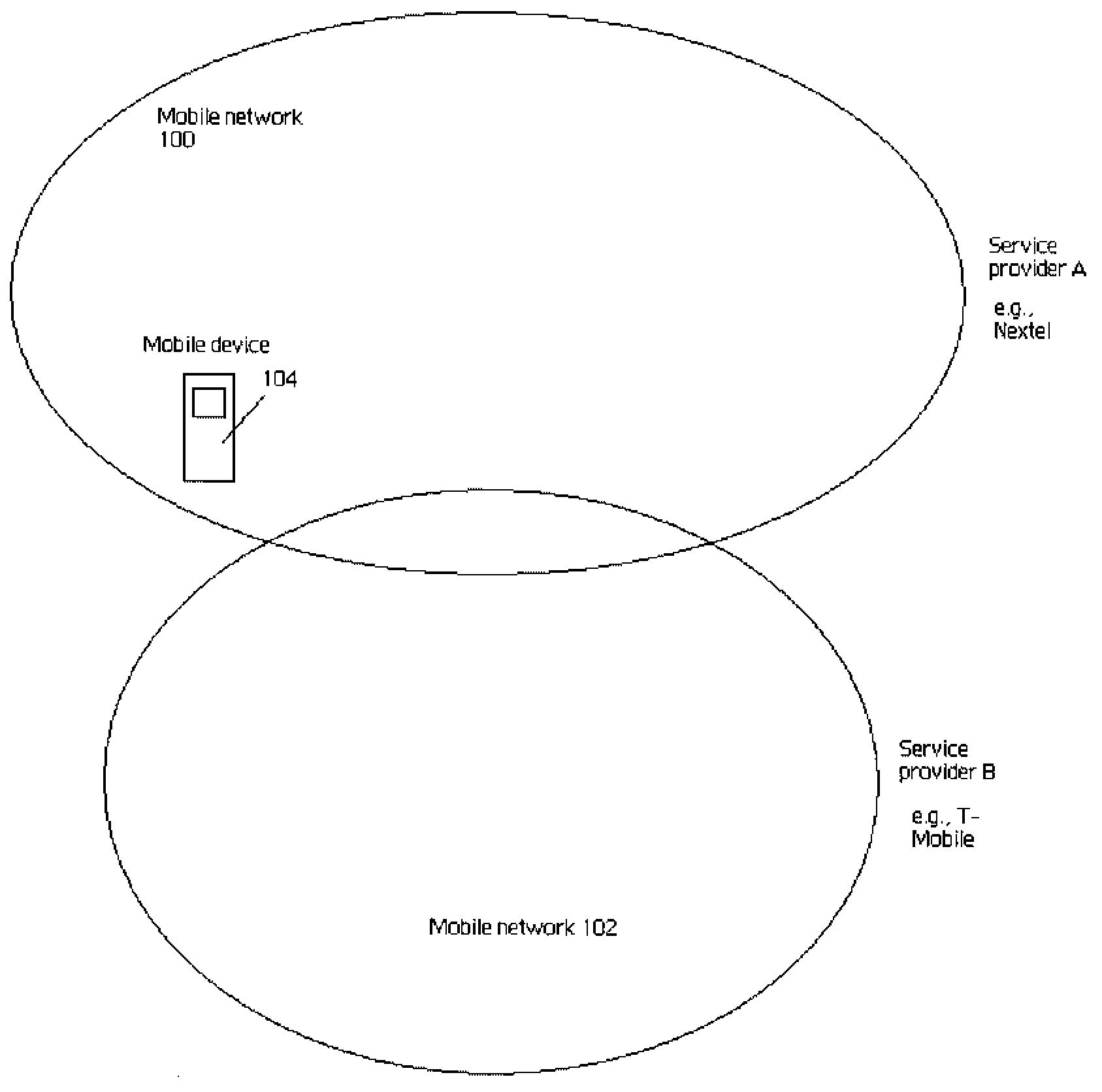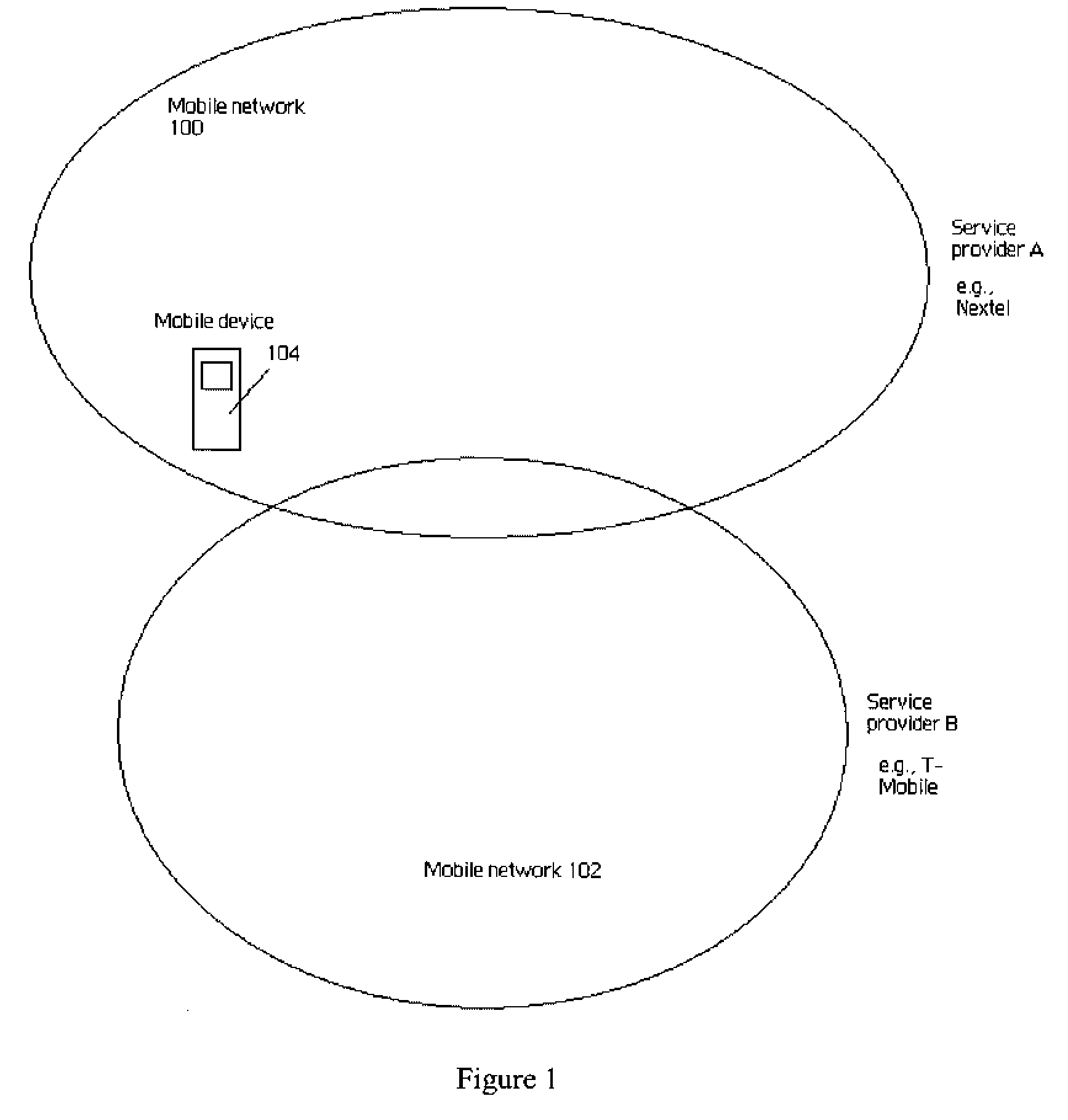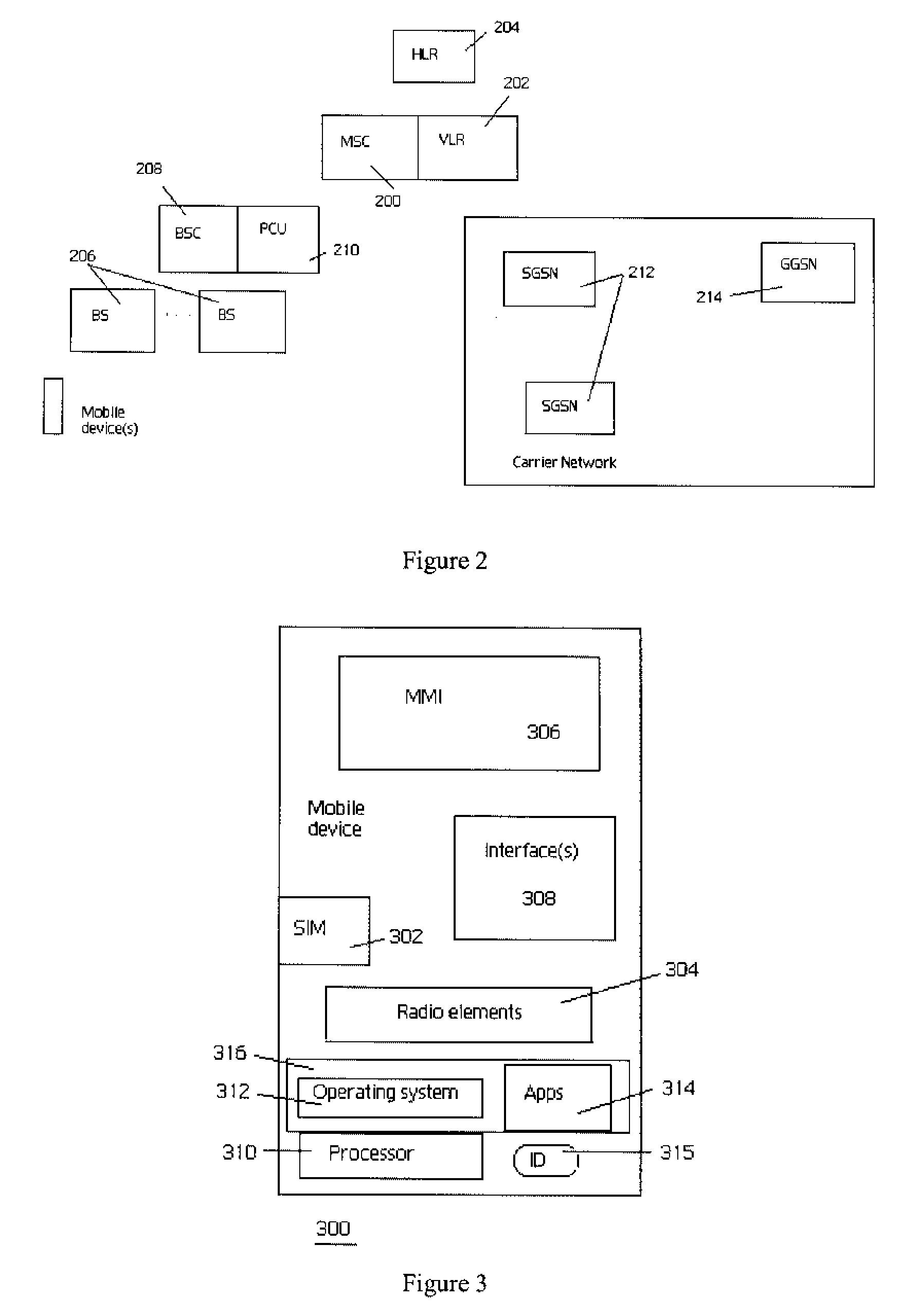Mobile device with an obfuscated mobile device user identity
a mobile device and user identity technology, applied in the field of maintaining privacy protections, can solve the problems of inability to decode the second part, and the identity of the mobile device user remains obscure, so as to achieve the effect of enhancing security
- Summary
- Abstract
- Description
- Claims
- Application Information
AI Technical Summary
Benefits of technology
Problems solved by technology
Method used
Image
Examples
Embodiment Construction
[0025]FIG. 1 illustrates a wireless networking environment in which the present invention may be implemented. In this example, there are two (2) wireless networks illustrated, namely, wireless network 100 and wireless network 102. Each wireless network is a communication network that supports wireless communication using known technologies and protocols. A mobile device 104 associated with a mobile device user is useable in both networks. A “mobile device” is any wireless client device, such as a cell phone, a pager, a personal digital assistant, a mobile computer with a smart phone client, or the like. For wide area wireless communications, a typical mobile-enabled device supports wireless access protocols capable of sending and receiving data to and from a connected network in a wireless manner. Typically, mobile-enabled devices use graphical displays and can access the Internet (or other communication network) on so-called mini- or micro-browsers, which are web browsers with smal...
PUM
 Login to View More
Login to View More Abstract
Description
Claims
Application Information
 Login to View More
Login to View More - R&D
- Intellectual Property
- Life Sciences
- Materials
- Tech Scout
- Unparalleled Data Quality
- Higher Quality Content
- 60% Fewer Hallucinations
Browse by: Latest US Patents, China's latest patents, Technical Efficacy Thesaurus, Application Domain, Technology Topic, Popular Technical Reports.
© 2025 PatSnap. All rights reserved.Legal|Privacy policy|Modern Slavery Act Transparency Statement|Sitemap|About US| Contact US: help@patsnap.com



